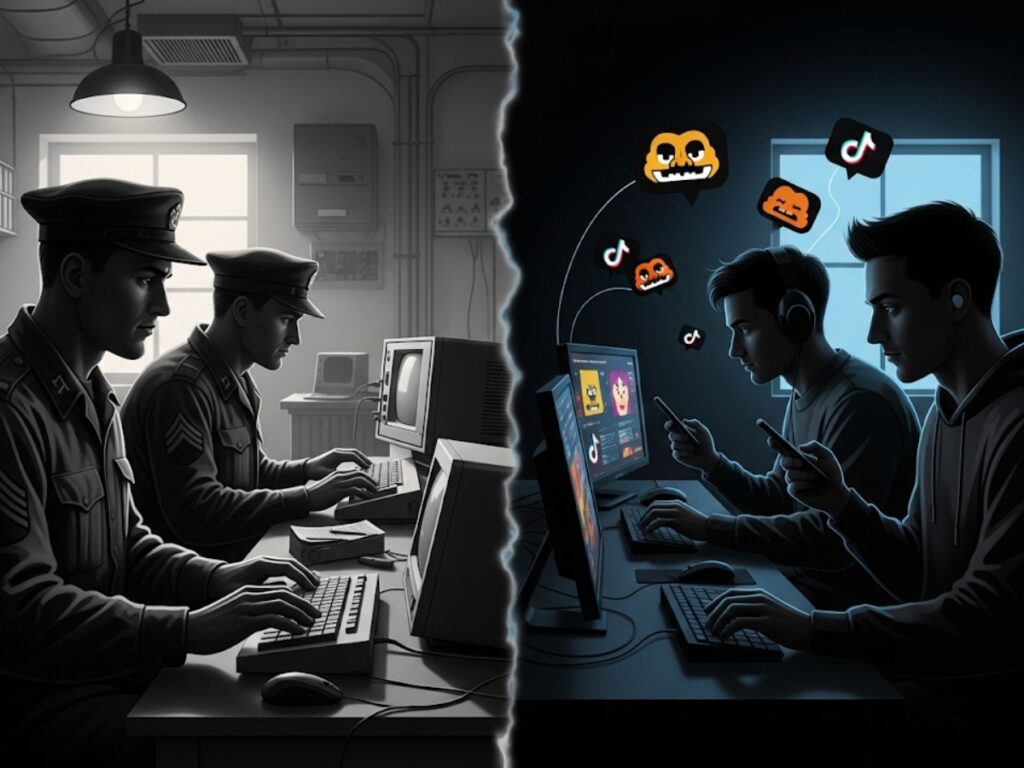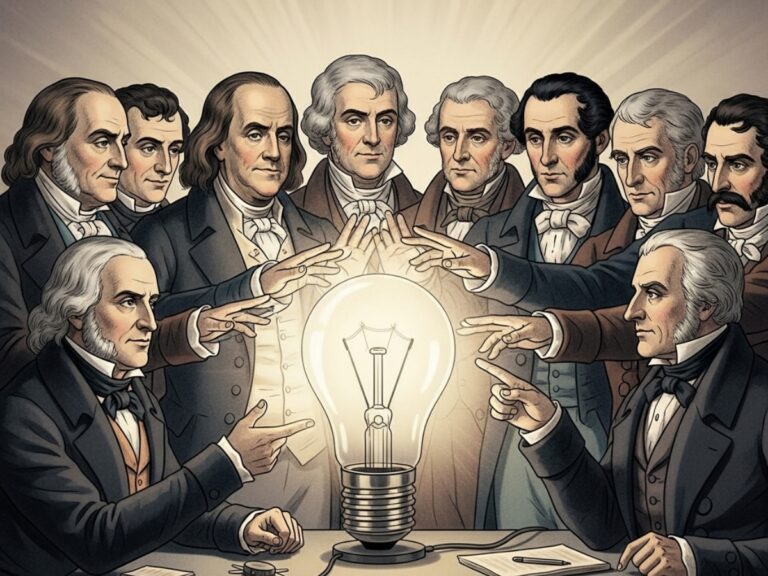
Think the internet was created for fun and social media? Think again. What started as a weapon of war became the world’s biggest digital playground.
When we scroll through Tiktok, send memes, or binge-watch YouTube, it’s hard to imagine that the history of the internet began in a very different place — a place shaped by war, fear, and the need for survival.
Table of Contents
The History of The Internet
A Tool Built for Survival, Not Entertainment

Back in the late 1960s, the world was caught in the tense atmosphere of the Cold War. The U.S. government was deeply worried that a nuclear attack could wipe out crucial communication lines, leaving the country unable to coordinate or respond effectively. Imagine a scenario where phone lines and communication centers were destroyed — chaos would ensue, and recovery would be slow, if not impossible.
To prevent such a catastrophic shutdown, researchers were tasked with designing a new kind of communication network — one that wouldn’t rely on a central hub vulnerable to attack. Instead, it needed to be decentralized, capable of rerouting information through multiple pathways if parts of the network went down. This idea was revolutionary at the time.
This challenge led to the creation of ARPANET, widely recognized as the first real version of the internet. Developed by the Advanced Research Projects Agency (ARPA) — a division of the U.S. Department of Defense — ARPANET was designed to connect computers across different locations in a way that could survive even the worst disruptions.
You can learn more about ARPANET and its military origins on Wikipedia
Who Invented the Internet?

Many people picture the net as the brainchild of a single inventor, but the truth is much more collaborative — a true team effort involving brilliant minds each contributing a crucial piece.
- Leonard Kleinrock was a pioneer who developed the theory of packet switching, the foundation that allows data to be broken down into small packets and sent independently across networks, only to be reassembled at the destination. This idea is what makes the internet fast and resilient.
- Lawrence Roberts took charge of turning Kleinrock’s theories into reality by leading the ARPANET project, managing the technical and logistical complexities of creating a working network.
- Then there are Vint Cerf and Bob Kahn, often called the “fathers of the internet.” They invented the TCP/IP protocol in the 1970s, which became the standard language for all internet communication — essentially the rules that let different networks “talk” to each other seamlessly.
- Finally, Tim Berners-Lee entered the picture in 1989, inventing the World Wide Web — the user-friendly way we navigate the internet today. His work made it possible to share information through websites and hyperlinks, opening the floodgates for the internet’s explosion into popular culture.
Together, these visionaries laid down the framework for what has grown into a vast global network — one that connects billions of people daily for work, learning, entertainment, and connection.
How a Military Project Became the Modern net

In the beginning, the internet wasn’t something you could just “log into” for fun or convenience. It was serious, technical, and mostly invisible to the general public. In the 1970s and 1980s, it lived in research labs, universities, and military facilities — a powerful tool used by scientists and engineers to share data and ideas across long distances.
But that all changed in the early 1990s, when a British computer scientist named Tim Berners-Lee created something that would flip the switch:
👉 the World Wide Web.
Unlike the raw, text-based interface of the early internet, the World Wide Web introduced web pages, hyperlinks, and browsers — things regular people could actually use. Instead of memorizing commands, you could just click. Suddenly, the internet wasn’t just for researchers — it was for everyone.
And just like that, a system built for military resilience and academic research evolved into a cultural force:
- People started creating personal blogs
- Businesses launched websites
- And yes — cat videos began their reign
From war rooms to living rooms, the transformation was complete.
You can explore Tim Berners-Lee’s original vision for the web here on W3C.
Why This History Still Matters

It’s easy to think of the internet today as just a source of entertainment, scrolling, and social sharing. But behind all that convenience is a system with deep, powerful roots — and that matters more than ever.
Here’s why:
- The internet is more powerful than most people realize.
It holds the world’s knowledge, runs critical infrastructure, drives global economies, and connects billions of lives. That’s a lot of power in one place — and with power comes risk. - Security and privacy aren’t optional.
The original net was built with military-grade resilience in mind. Today, those concerns live on — in cybersecurity, data protection, and global surveillance. If you think your online life is private, think again. - It’s not just a toy — it’s the backbone of modern life.
From education and healthcare to banking and transportation, everything runs on the internet. It’s not just for entertainment — it’s how the world functions now.
So next time you hop on Wi-Fi, remember:
You’re using a tool designed to survive nuclear war.
Maybe it’s worth using it a little more mindfully.
Final Thoughts: More Than Just Memes
The internet wasn’t invented for scrolling or selfies — it was born out of fear, strategy, and survival. Knowing its roots helps us use it more wisely, more creatively, and more consciously.
So next time you’re lost in a trending video or viral dance, remember:
This all began with a plan to survive a nuclear war.
For more in-depth articles on technology, visit our Tech Category.







